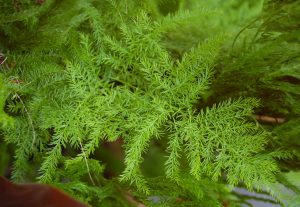Full sun annuals are vibrant, spirited plants that bring color, texture, and movement to our gardens. As they flourish in bright and sunny conditions, they offer both beauty and functionality, such as attracting pollinators or deterring pests.
African Daisy
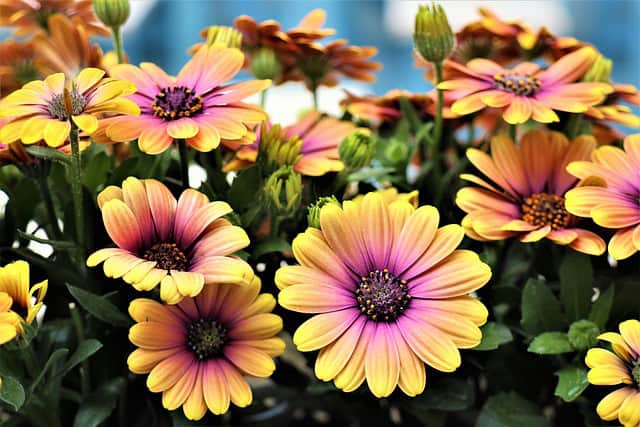
The African Daisy, or Osteospermum, is a resilient and eye-catching flower noted for its vivid colors and unique shape. These daisies bloom in various shades, including bright orange, sunny yellow, and soothing lavender. Perennial in warmer climates, they act as annuals in cooler regions, brightening gardens from spring through fall.
When planting African Daisies, opt for areas that receive full sun for at least six hours a day. This ensures they produce abundant blooms. They prefer well-drained soil, so if your garden has heavy clay, consider amending it with sand or planting them in raised beds to enhance drainage. Regular deadheading will encourage continuous flowering and help prolong their vibrant display throughout the season.
Another intriguing characteristic of African Daisies is their ability to open and close in response to temperature and light changes, providing a dynamic element to your garden. Additionally, they are drought-tolerant once established, making them an excellent choice for sustainable gardening practices. Given their beautiful appearance and beneficial pollinator attraction, these hardy flowers can serve as a striking centerpiece in your garden or as part of a larger landscape design.
Amaranth

Amaranth, with its spectacular foliage and plume-like flowers, is an exceptionally versatile plant that thrives in sunny spots. This hardy annual can grow upwards of five feet tall, making it a stunning focal point in garden beds. What sets Amaranth apart is its remarkable color range; varieties feature deep crimson, rich purple, and vibrant green leaves. This plant can easily transform a boring garden plot into an eye-catching display.
Another noteworthy aspect of Amaranth is its nutritional value; the seeds of certain varieties are edible and high in protein, making them a great addition to home gardens for both ornamental and culinary purposes. The foliage can also be cooked or used fresh in salads, adding an interesting twist to conventional dishes.
Amaranth prefers well-drained, fertile soil and thrives best with consistent watering, especially during dry spells. It is relatively pest-resistant, requiring minimal intervention. Additionally, due to its tall and sturdy structure, it works well as a backdrop plant or in mixed borders, providing valuable height contrast among lower-growing flowers. By planting Amaranth alongside shorter annuals, you can create a visually appealing layered effect in your garden.
Angelonia
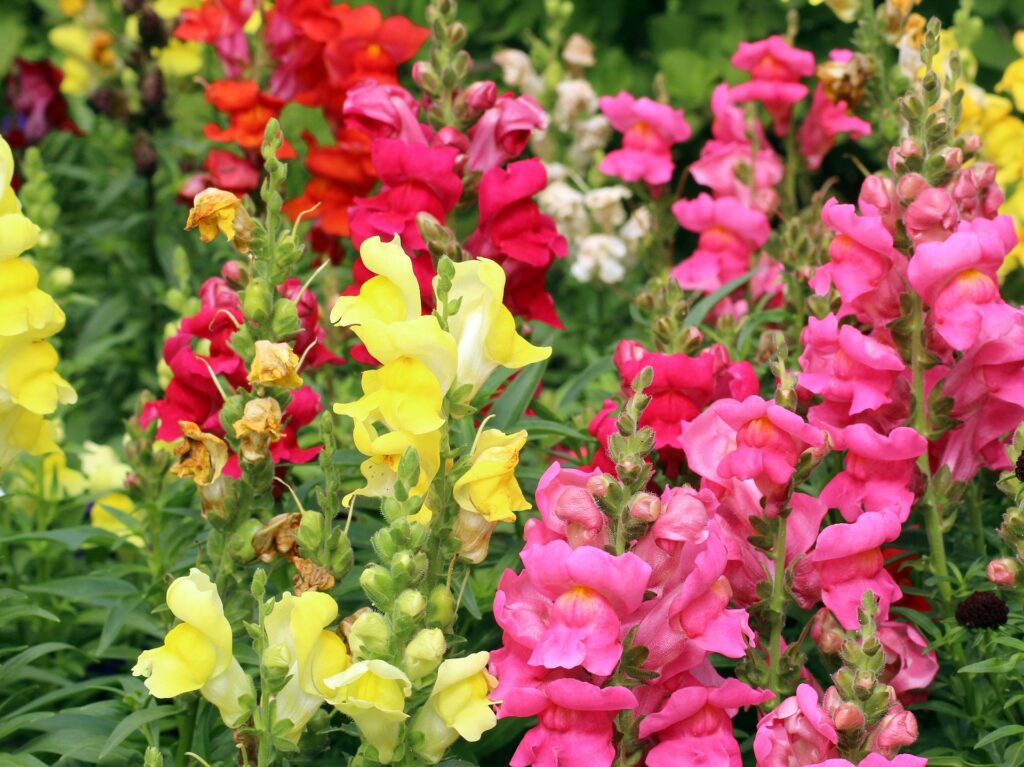
Angelonia, often known as summer snapdragon, adds a touch of elegance and fragrance to gardens. With its tall spikes of delicate flowers in shades of purple, pink, and white, this annual creates a lovely silhouette in any planting scheme. What makes Angelonia particularly attractive is its ability to continue blooming throughout the summer, even in the hottest months, making it an excellent choice for enduring summer color.
These flowers are quite resilient, thriving in well-drained soil and full sun. They require regular watering, especially during dry spells, but they can tolerate short periods of drought once established. Angelonia is also known for its low maintenance needs, as it is less prone to diseases and pests compared to other flowering plants.
Another appealing quality of Angelonia is its suitability for various garden settings. It can be featured as a stunning focal point or used as part of mixed borders. Additionally, Angelonia performs well in containers and hanging baskets, providing versatility in garden design. Arranging Angelonia with other full sun annuals can create a harmonious garden display filled with contrasting shapes, making your outdoor space a visual delight.
Calibrachoa
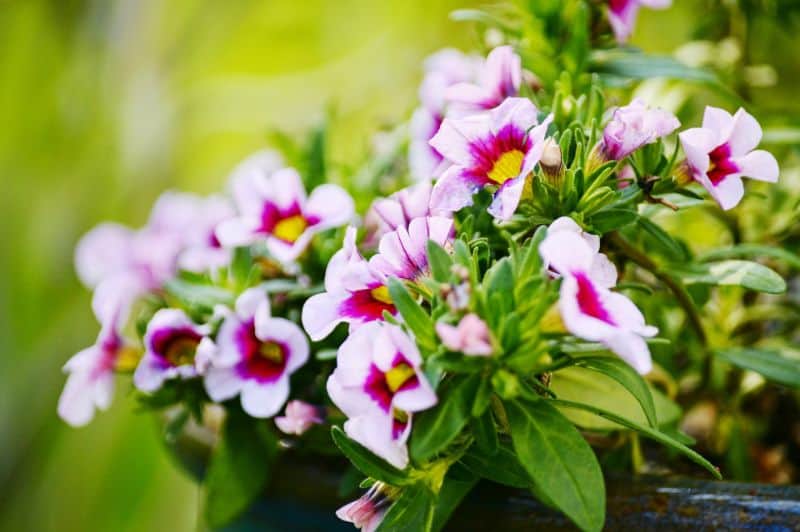
Calibrachoa, popularly referred to as “million bells,” offers an abundance of colorful, small, trumpet-like flowers that create a lush appearance in hanging baskets and containers. These beloved annuals bloom profusely throughout the growing season, boasting a wide range of colors like pink, purple, yellow, and white. Their cascading growth habit makes them an excellent choice for spillover in pots and planters.
To achieve the best results with Calibrachoa, plant them in full sun with well-drained soil. Water them regularly but be cautious about overwatering, as these plants prefer slightly drier conditions. Fertilizing every few weeks using a balanced liquid fertilizer can enhance flower production and vibrancy.
One of the most remarkable traits of Calibrachoa is its resistance to heat and humidity, thriving even during the hottest days of summer. This quality makes them a perfect addition to hot and sunny patios or balcony gardens. For an added treat, try planting multiple varieties together to create a vibrant tapestry of color that changes throughout the season.
Cosmos
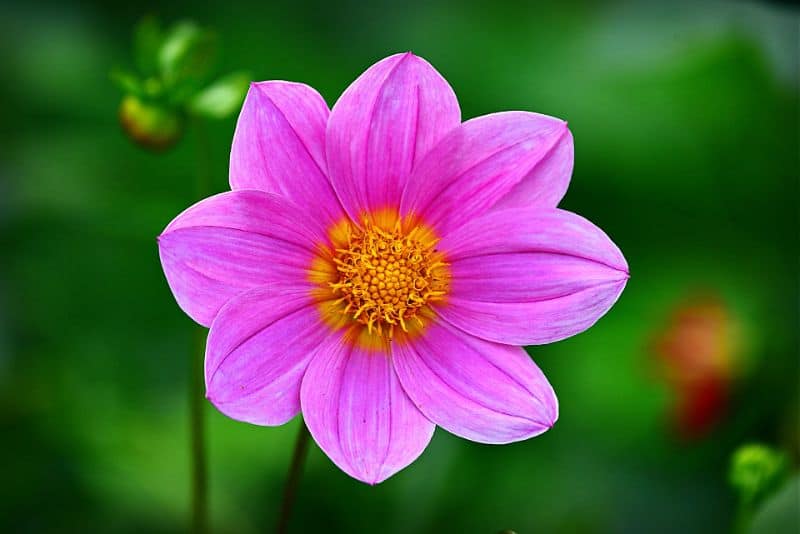
Cosmos are beloved for their carefree growth and cheerful blooms that add a touch of whimsy to any garden. These annuals bloom from early summer to frost, displaying large, daisy-like flowers in shades of white, pink, and orange. Their tall, slender stems sway gently with the breeze, creating movement that brings life to your garden.
Cosmos thrive in poor soil conditions, making them ideal for gardeners who want to minimize soil preparation. They prefer full sun and require minimal care, making them excellent for those with busy lifestyles. Moreover, regular deadheading encourages continuous blooming, ensuring that your garden remains colorful for a long pottery.
In addition to their aesthetic appeal, Cosmos are excellent for attracting pollinators such as bees and butterflies, supporting your garden’s ecology. Their long stems also make them perfect for cutting gardens, allowing you to bring a piece of summer into your home. Planting Cosmos in groups can create a lovely visual impact, and their varied heights and colors provide depth and interest to any garden design.
Cosmos Flower
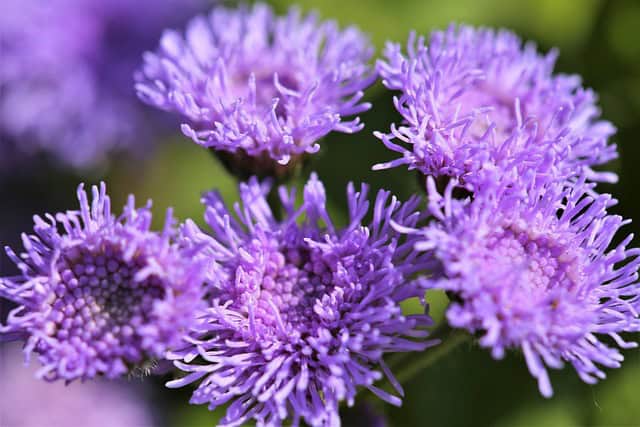
Diving deeper into the Cosmos family, the Cosmos Flower, or Cosmos bipinnatus, exhibits uniquely frilled petals that set it apart from other flowers. With their light and airy appearance, these flowers can easily reach heights up to four feet, making them suitable for the back of garden borders. Their abundance of blooms makes them a great choice for wildflower gardens and cottage-style gardens that celebrate a natural beauty.
The Cosmos Flower prefers full sun and well-drained soil but is quite adaptable. They thrive best when direct sown into the garden at the appropriate time, and you’ll be rewarded with a sea of blooms in summer. Their resilience also means they can tolerate periods of drought, making them a low-maintenance option.
Additionally, Cosmos Flowers come in a variety of colors and can act as an effective background for other more prominent flowers in a mixed border or garden bed. Not only do they enhance your garden’s beauty, but they also provide excellent cut flowers for arrangements, offering time-tested style and charm.
Crossandra
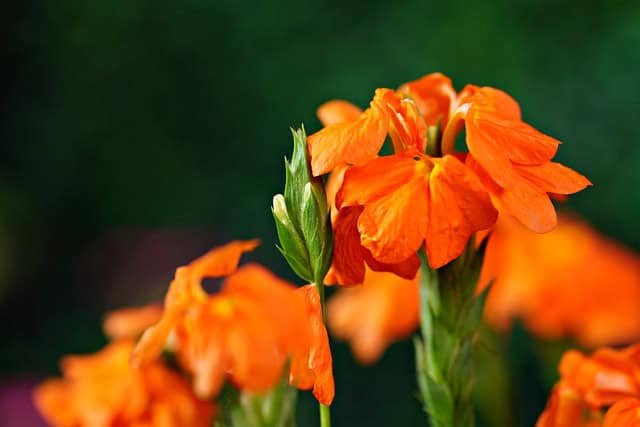
Crossandra, often known as the “firecracker flower,” is a tropical delight that thrives in full sun. Recognized for its vibrant orange and yellow flowers, this annual will brighten any garden with its striking color palette. The plant’s lush green foliage serves as an excellent backdrop for its unique flowers, creating an inviting atmosphere.
This annual prefers consistently moist, well-drained soil and thrives in sunny areas, making it ideal for tropical or subtropical gardens. During particularly dry spells, be sure to keep an eye on moisture levels, as Crossandra prefers to remain hydrated but not waterlogged.
When designing your garden, consider planting Crossandra in groups or clusters to maximize its visual impact. This plant can also serve as a statement piece in patio containers, where its remarkable blooms attract attention. With its ability to attract hummingbirds and butterflies, Crossandra plays a vital role in creating a lively and engaging garden environment.
Cupflower
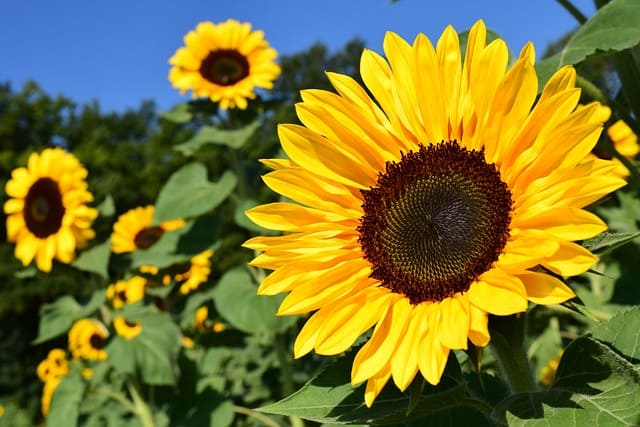
Cupflower, scientifically known as Nierembergia, offers a charming and delicate appearance that brings a touch of softness to sunny gardens. With cup-shaped blooms in pastel shades like white and lavender, this annual flourishes in well-drained soil while basking in full sun.
Cupflower is a great choice for containers, rock gardens, and perennial borders, where its trailing habit allows it to spill gracefully over edges. These flowers are drought-tolerant, making them an excellent addition to low-water landscapes. Regular deadheading will enhance flowering and ensure a prolonged blooming season throughout the summer.
Encouraging wildlife in your garden? Cupflowers attract bees and butterflies, contributing positively to the local ecosystem. Their understated beauty provides a serene contrast to bolder blooms, making them an ideal choice alongside other full sun annuals. Planting Cupflowers with stronger-stemmed varieties can create a visually dynamic garden, showcasing layers of texture and color.
Cypress Vine
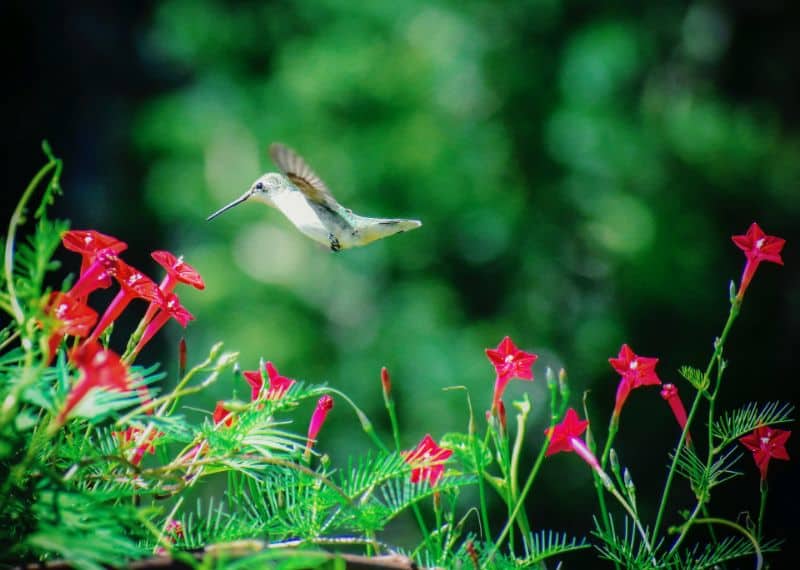
Cypress Vine, or Ipomoea quamoclit, is a delightful annual climber that adds vertical drama to sunny gardens. Known for their feathery foliage and enchanting star-shaped flowers, typically in shades of red, white, or pink, these vines create stunning displays on trellises, arbors, or fences.
This plant thrives in full sun and well-drained soil, requiring regular watering to support its vigorous growth. Cypress Vine is particularly appealing to hummingbirds and butterflies, ensuring your garden buzzes with life. Its climbing habit allows it to cover vertical spaces elegantly, creating a lush green backdrop enhanced by vibrant blooms.
When incorporating Cypress Vines into your garden design, consider planting them near outdoor seating areas or entrances to create welcoming, colorful displays. Once established, these vines create an enchanting focal point that captures the attention of all who pass by.
Feather Celosia
Feather Celosia is a visually striking annual that stands out in any garden for its plume-like flowers that range from vibrant pink to rich gold. These show-stoppers thrive in full sun and are extremely heat-tolerant, making them perfect for summer gardens.
Feather Celosia prefers well-drained, nutrient-rich soil and should be watered regularly for best results. Once established, they can withstand periods of drought and continue to produce stunning blooms. Spreading them throughout the garden in blocks, mixed beds, or containers creates dramatic bursts of color.
One of the exciting aspects of Feather Celosia is its suitability for drying arrangements—once cut, the flowers retain their color for months, allowing you to enjoy your colorful garden indoors. They also attract pollinators, ensuring that they play a vital role in maintaining a healthy garden ecosystem. Mix Feather Celosia with other full sun annuals to design visually striking borders and beds.
Floss Flower

Floss Flower, or Ageratum, is celebrated for its fluffy clusters of blooms in shades of blue, purple, and white, providing a soft and charming touch to sunny gardens. These annuals thrive in full sunlight and flourish in well-drained soil, requiring regular watering to keep their blossoms vibrant.
Floss Flowers are particularly useful in garden borders, containers, or even as elegant fillers in mixed arrangements. Their low-growing habit makes them ideal companions for taller flowers, providing much-needed contrast and dimension. To maintain their lush appearance, regular deadheading is crucial to encourage more flowers throughout the growing season.
In addition to their ornamental appeal, Floss Flowers are known for attracting pollinators such as bees and butterflies, enhancing your garden’s vitality. These flowers can also serve as a significant source of food for pollinators, contributing to a flourishing ecosystem both visually and ecologically.
Four O’Clock
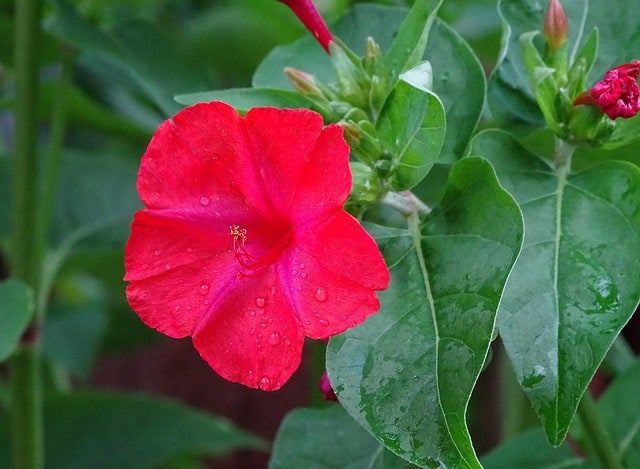
Four O’Clock, with its whimsical name and delightful blooms, is a unique annual that blooms in the late afternoon and stays open until morning. These flowers, often in shades of pink, yellow, and white, release a captivating fragrance that adds another layer of charm to your evening garden.
Growing well in full sun, Four O’Clock appreciates well-drained soil and moderate watering. They can adapt to various soil types, making them an excellent choice for entire garden layouts. These hardy annuals can grow up to three feet tall, lending stature to your garden.
The intriguing aspect of Four O’Clock is their tendency to self-seed, allowing you to enjoy their wonders year after year. They can flourish in cottage or wildflower gardens, where their vibrant colors add to the natural beauty. When planted alongside other annuals, they create an inviting and fragrant outdoor environment.
Gazania
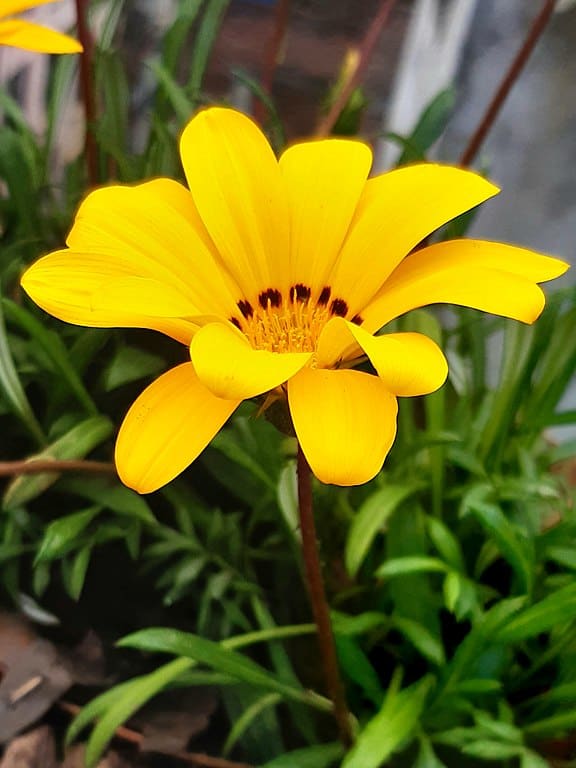
Gazania, a sun-loving perennial often grown as an annual in colder climates, is a remarkable flower characterized by its vibrant daisy-like blooms. The cheerful flowers come in a rich palette of yellow, orange, and red, often with contrasting dark centers. Gazania thrives in full sun and is remarkably heat-tolerant, making them perfect for gardens exposed to high temperatures.
These flowers prefer well-drained soil and need regular watering during their initial growth phase. Once established, Gazanias are highly drought-resistant and can flourish with minimal care. Their ability to bloom continuously throughout the summer season makes them an ideal choice for low-maintenance gardens.
Gazania is often used to create striking ground cover in borders or rocky gardens. Additionally, their low profile means they blend beautifully with taller flowers, creating dynamic visual interest. As a bonus, their blooms attract pollinators, making them beneficial for your local ecosystem.
Gerbera
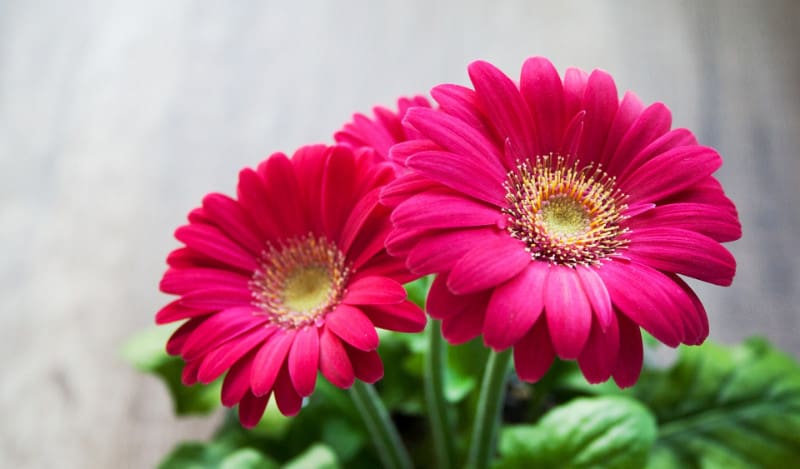
Gerbera daisies are a classic and beloved addition to gardens, known for their large, eye-catching flowers that create a cheerful display. Available in an array of colors including red, pink, orange, and yellow, Gerberas are adored for their rich hues and sturdy stems, which make them excellent cut flowers.
Gerbera thrives best in full sun, requiring at least six hours of sunlight daily for optimal growth. These flowers prefer well-drained soil, and while they appreciate consistent moisture, they do not tolerate soggy conditions. Fertilizing every few weeks will help boost blooming and contribute to their overall vibrancy.
Using Gerbera in garden mixes can add a bold statement, particularly in borders or containers. Their remarkable ability to attract pollinators and brightening effect on garden design make them a cherished flower for both aesthetics and practicality. Cut and display them indoors for stunning floral arrangements, bringing summer cheer into your home.
Gomphrena
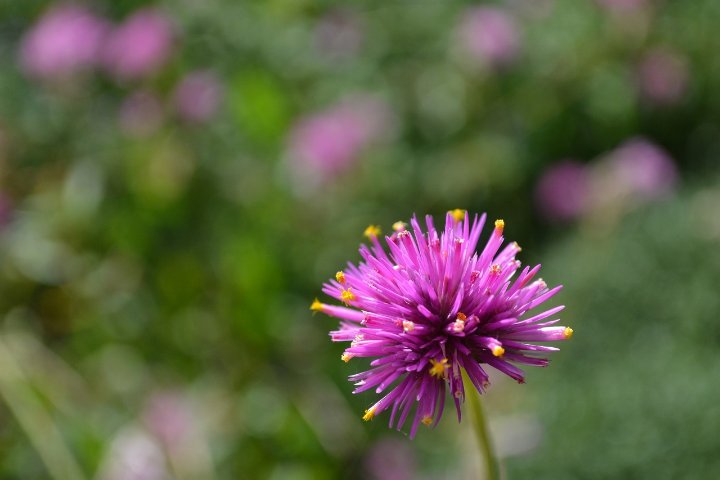
Gomphrena, popularly known as globe amaranth, is a striking annual treasured for its unique, globular blooms that bring texture and color to gardens. Available in shades of vibrant pink, purple, and white, Gomphrena requires minimal care and thrives in full sun. Its drought tolerance makes it an excellent choice for heat-driven landscapes.
Planting Gomphrena in clusters creates stunning visual impact, while their sturdy stems make them ideal for cut flowers. They work well in both gardens and containers, providing long-lasting color from summer until frost. Regular deadheading will encourage continuous blooming, ensuring a prolonged display of beauty.
One of the most appealing aspects of Gomphrena is its attractivity to butterflies and other pollinators, enhancing your garden’s biodiversity. Their resilience and striking appearance make them a popular addition to wildflower gardens or as part of larger mixed plantings, contributing both beauty and functionality to your landscape.
Lantana

Lantana is a sun-loving perennial often used as an annual in cooler areas, known for its diverse flower clusters that bloom in glorious colors. The vibrant hues—ranging from yellows to reds, pinks, and whites—attract a multitude of pollinators, particularly butterflies. These hardy plants thrive in full sun, providing a stunning display while requiring minimal maintenance.
Lantana prefers well-drained soil and is drought-tolerant once established, making them suitable for low-water gardens. They can spread out and grow freely, allowing for creative design choices such as cascading over walls or filling areas of your garden with a sea of color.
Due to their resilience and ability to bloom continuously, Lantana is perfect for attracting wildlife while adding beauty to your landscape. Planting them in groupings can create dense patches of color that are visually stunning and lively, creating focal points in your garden design.
Larkspur
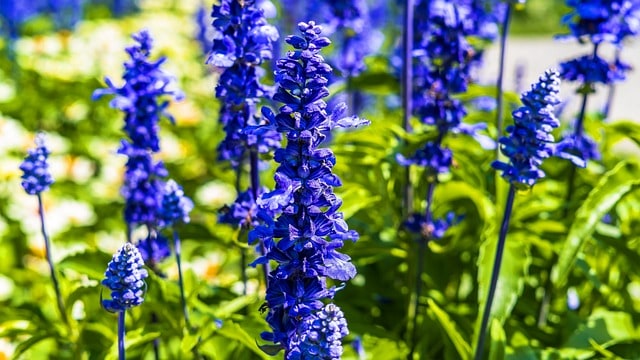
Larkspur is a charming annual that adds vertical interest and an ethereal quality to sunny gardens. With their tall spikes adorned with a multitude of flowers in shades of blue, purple, and white, Larkspur provides a delightful display, often exceeding three feet in height. These flowers thrive in full sun and grow wonderfully in rich, well-drained soil.
Because Larkspur can be somewhat fragile, providing support through staking is recommended as they start growing taller. Regular watering and occasional deadheading may also help maintain their vigor and encourage more blooms. Larkspur supports a variety of pollinators, making them valuable for those looking to enhance their garden’s ecological appeal.
To create a lush garden display, consider planting Larkspur in the backdrop of your garden beds, where they can stand tall and proud. Their unique vertical growth will draw the eye and create a beautiful contrast with low-growing species, setting the stage for a dynamic garden full of interest.
Lobelia
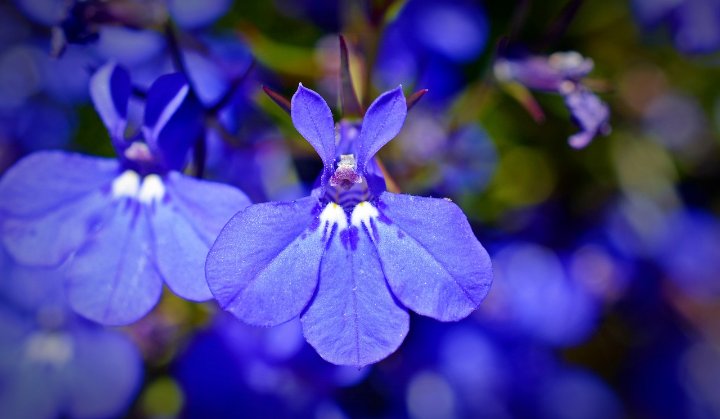
Lobelia is a versatile and charming annual that is prized for its cascading blooms in vibrant blues and purples. A favorite among gardeners, Lobelia thrives in full sunlight, although it can tolerate partial shade, particularly in hotter climates. This adaptable flower does well in containers or hanging baskets, where it can spill over and create a graceful waterfall of color.
Lobelia prefers consistently moist, well-drained soil and requires regular watering to maintain its stunning display. It’s relatively low maintenance; however, occasional deadheading can encourage an extended blooming season throughout the summer and into fall.
With its ability to attract pollinators such as bees and butterflies, Lobelia adds both aesthetic value and ecological function to gardens. Use Lobelia as a border plant, in pots, or trailing over walls for dynamic visual impacts, creating a serene and inviting environment that feels alive.
Love-in-a-Mist

Love-in-a-Mist, or Nigella, offers delicate, intricate blooms that bring ethereal beauty to sunny gardens. Known for its unique floral structure and feathery foliage, this annual produces flowers in shades of blue and white, often surrounded by a mist of fine leaves that enhances its whimsical appeal.
Love-in-a-Mist is easy to grow in well-drained soil, thriving beautifully in full sun. They appreciate regular watering and tolerate poor soil conditions, making them suitable for less-than-perfect garden settings. Their ability to self-seed enables them to return year after year, offering gardeners a delightful surprise each season.
Incorporating Love-in-a-Mist into your garden design brings a sense of lightness and charm. Their lovely flowers make for excellent cut arrangements, allowing you to enjoy their beauty indoors as well. Planting these unique blooms alongside complementary flowers creates a dynamic garden with plenty of charm.
Mandevilla
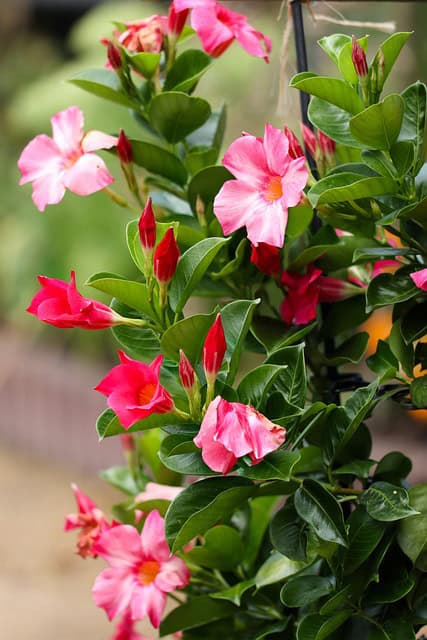
Mandevilla is a stunning and exotic flowering vine that creates a dramatic focal point in sunny gardens. Known for its large, trumpet-shaped blooms in shades of pink, red, and white, Mandevilla brings a tropical flair wherever it grows, creating an inviting atmosphere that captivates all who visit.
This climbing plant thrives in full sun, requiring well-drained, fertile soil to support its vigorous growth. Regular watering is critical, especially during hot summers, to ensure that Mandevilla remains vibrant and healthy. Providing a trellis or support structure allows the vine to reach its full height and showcase a magnificent floral display.
Mandevilla is an excellent choice for outdoor seating areas, enhancing ambiance with its vibrant colors and fragrance. Additionally, it plays an essential role in attracting hummingbirds and butterflies, making your garden a lively ecosystem. By combining Mandevilla with other full sun annuals and perennials, you can create stunning vertical gardens filled with diverse textures and colors.
Marigold
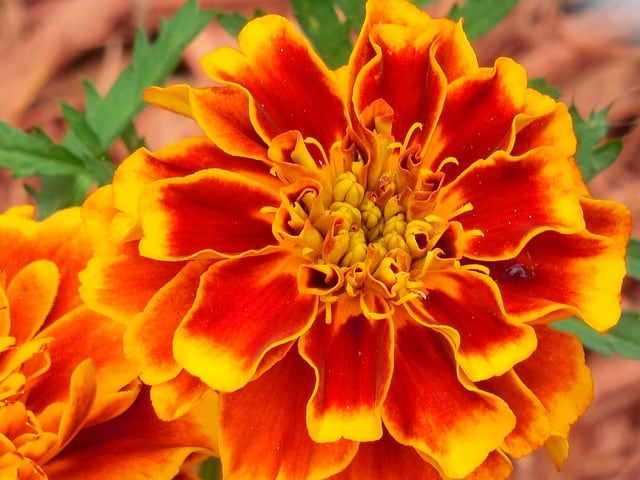
Marigolds are perhaps one of the most beloved and recognized annuals, prized for their vivid yellow and orange blooms. These cheerful flowers adore full sun, thriving in various soil types, making them incredibly versatile for different garden styles. Known for their ability to repel pests, marigolds are often considered a natural insect deterrent, making them a favorable companion plant in vegetable gardens.
These annuals require regular watering, especially during dry periods, but they’re also quite tolerant of less-than-ideal conditions. Marigolds can bloom from spring until the first frost, offering a long season of vibrant color to your landscape. Deadheading encourages even more blooms, keeping them looking fresh and lively.
The versatility of Marigolds makes them perfect for borders, mixed beds, or containers, where their sunny disposition adds warmth and joy to any setting. Plus, they attract pollinators such as bees and butterflies, adding to the dynamic life in your garden. With their enduring charm, Marigolds play an integral role in full sun annuals, bringing vibrant color and practicality to diverse gardening designs.
Melampodium
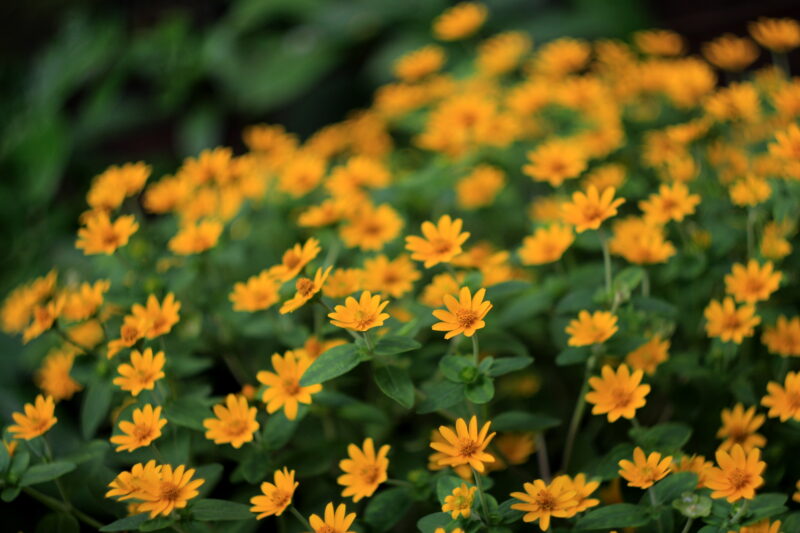
Melampodium is a delightful annual that is loved for its cheerful, bright yellow flowers and low-growing habit. Preferring full sun, these resilient plants thrive in well-drained soils and are incredibly heat-tolerant, making them perfect for summer gardens.
These annuals are low-maintenance and can establish quickly, filling garden beds and containers with vibrant blooms throughout the summer and into the early fall. Regular watering ensures their blossoms remain healthy, but Melampodium demonstrates a remarkable ability to thrive in less-than-ideal conditions.
Planting Melampodium allows for a fantastic visual layering effect, proving a brilliant filler among taller varieties and offering useful ground cover. They attract pollinators like butterflies, supporting your garden’s ecological balance and encouraging biodiversity. Their long-lasting blooms and cheerful appearance make Melampodium a staple in sunny gardens, ensuring that there’s never a dull moment.
Mexican Sunflower

The Mexican Sunflower, or Tithonia, is a radiant annual recognized for its striking orange flowers and tall stature. Known for their large, daisy-like blooms, these sunflowers add exciting boldness to full sun gardens. They thrive in warm climates and well-drained soil, embodying summer vibrancy.
Mexican Sunflowers prefer consistent watering during their growth phase but are quite drought-resistant once established. These plants can reach heights of six feet, making them outstanding statement plants in gardens, where they draw the eyes with their stunning blooms.
Additionally, Mexican Sunflowers are particularly beneficial, attracting pollinators such as bees and butterflies to enrich your garden’s ecosystem. Use them to create visual splendor in cottage gardens, wildflower meadows, or as gorgeous backdrops to lower-growing annuals. Their ability to stand out in any mixed planting ensures that your garden remains lively and full of summer spirit.
Nasturtium
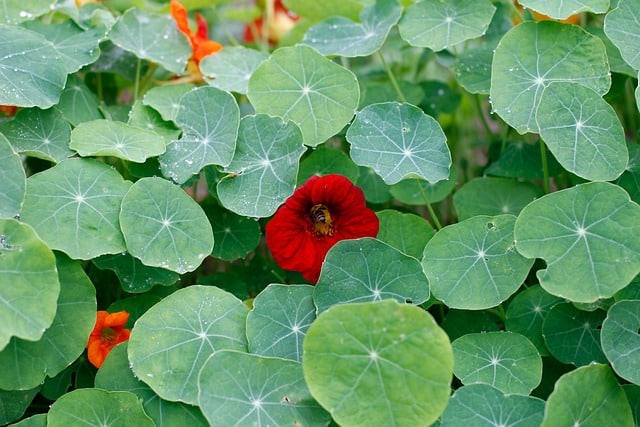
Nasturtiums are charming annuals that majestic garden spaces with their unique shape and vibrant colors. Featuring round leaves and bright flowers in hues from yellow to fiery orange, Nasturtiums are not only pretty but also edible, adding culinary flair to garden designs.
These sun-loving plants prefer well-draining soil and thrive in full sun, although they can tolerate partial shade. They are relatively easy to grow, flourishing with little maintenance and showcasing blooms from late spring until the first frost. Nasturtiums can self-sow, allowing them to return year after year, enhancing your garden’s perpetual charm.
Using Nasturtiums as ground cover or planting them in containers allows their blossoms to spill over, creating an enchanting tapestry of colors. They attract pollinators and can also repel pests, benefiting garden health. Their culinary applications offer an exciting twist to any meal, making Nasturtiums a unique garden addition that promises both beauty and function.
Ornamental Pepper
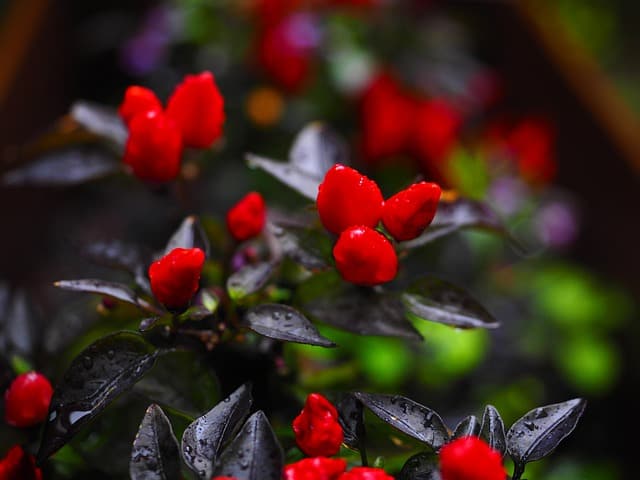
Ornamental Peppers are intriguing annuals that add a bold and distinct flair to sunny gardens. With their vibrant fruits transitioning from green to shades of purple, yellow, and red, these plants can provide continuous visual excitement. Their stunning appearance is complemented by the fact that they can thrive in various soil types and tolerate drought once established.
Ornamental Peppers prefer full sun, requiring regular watering while establishing strong growth. Many varieties can be grown in pots or borders, enriching gardens with color and texture. Despite their ornamental appeal, one should be cautious around pets or children, as the fruits can be hot.
Using Ornamental Peppers creatively in arrangements provides rich pops of color and a unique experience for visitors to your garden. Consider planting them alongside other full sun annuals or perennials to create a sensational color palette that draws the eye. They represent a perfect blend of appealing aesthetics and practicality in summer gardens.
Pentas
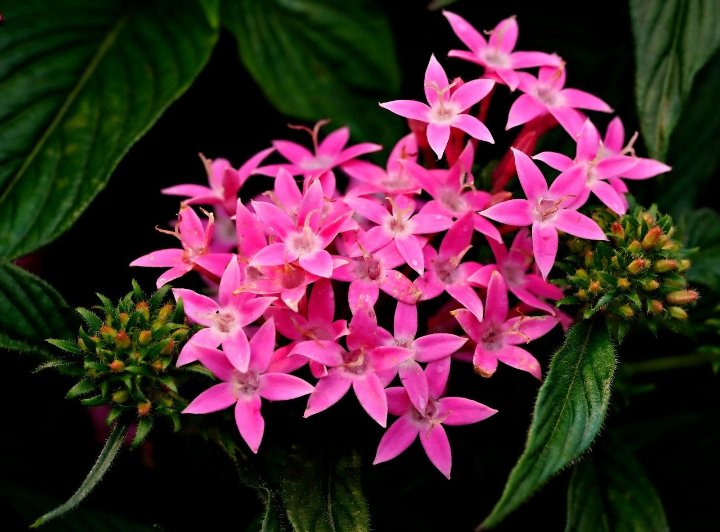
Pentas is a delightful annual recognized for its star-shaped flowers that are available in blues, reds, and whites. This hardy plant thrives in full sun, producing continuous blooms that attract butterflies and hummingbirds alike, further enhancing your garden’s vibrancy.
Pentas prefer well-drained soil and moderate watering, allowing them to withstand both drought and waterlogged conditions. With proper care, they can bloom from spring until the first frost, providing sustained beauty throughout the growing season.
These flowers shine in garden beds, borders, and containers, where their unique star-shaped flowers and lush green foliage create stunning displays. By incorporating Pentas into your garden design, you will benefit from their vibrant appearance while simultaneously nourishing local pollinators, contributing positively to your ecosystem.
Petunia
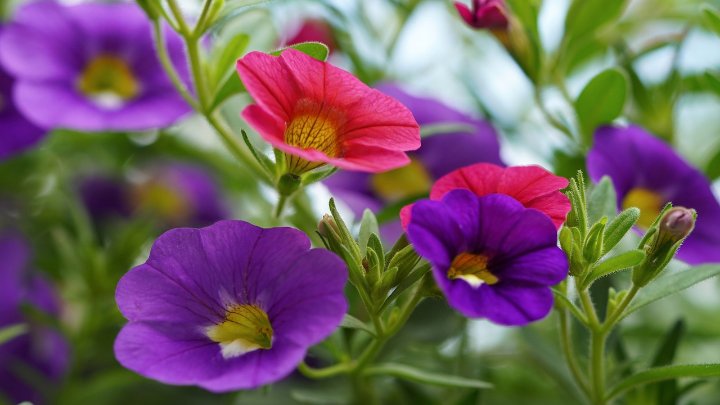
Petunias are quintessential annuals known for their broad range of colors and patterns. With large blooms that create a summer spectacle, Petunias thrive in full sun and enjoy well-drained soil, making them a favorite for hanging baskets and garden beds alike.
Regular watering and the removal of spent blooms will keep Petunias vibrant and healthy. Fertilizing with a balanced mix will also enhance their bloom production, ensuring that your garden remains lively and colorful all summer long.
Petunias can be utilized in various garden designs, from cottage gardens to more formal landscapes. Their cascades of color help create stunning wall or container displays, while they also attract pollinators like bees and butterflies. Their versatility and lush blooms ensure that every garden can find a spot for these bright and inviting flowers.
Snapdragons
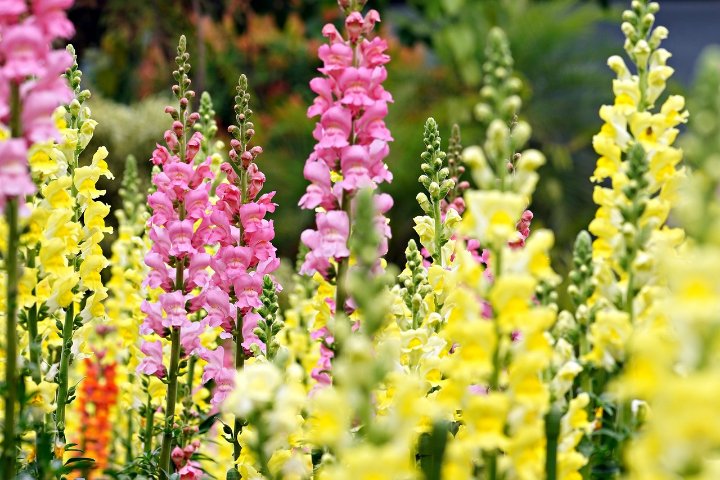
Snapdragons are enchanting flowers historically cherished for their whimsical blooms and delightful fragrance. Available in an array of colors, from creamy whites to deep violets, these annuals prefer full sun and grow well in rich, well-drained soil.
Providing vertical interest, Snapdragons can reach impressive heights, making them a dazzling backdrop in mixed beds. Regular watering and deadheading promote continual blooming, and offering stakes for taller varieties can provide much-needed support as they grow.
These flowers also attract beneficial insects, such as bees and butterflies, creating a friendly environment in your garden. Including Snapdragons in your designs adds charm and intrigue, with their blossoms lending a touch of whimsy that delights all who encounter them.
Spider Flower
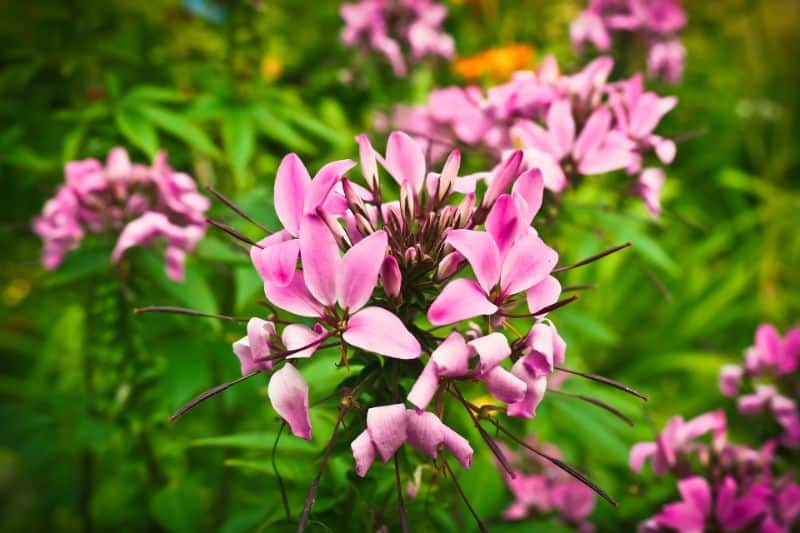
Spider Flower, or Cleome, brings an air of whimsy to gardens with its unique, spindly blooms that resemble delicate spider legs. Reaching impressive heights, Spider Flowers thrive in full sun and appreciate well-drained soil, making them a stunning feature in any garden.
These plants require regular watering during their growth phase, but once established, they can tolerate periods of drought. Their ability to attract pollinators enhances your garden’s biodiversity, enriching the natural balance in your landscape.
Using Spider Flowers adds vertical interest to installations or borders. Their unusual shape and height create a distinct visual dynamic when planted alongside other flowers at varying heights, resulting in breath-taking garden compositions that inspire awe.
Stock
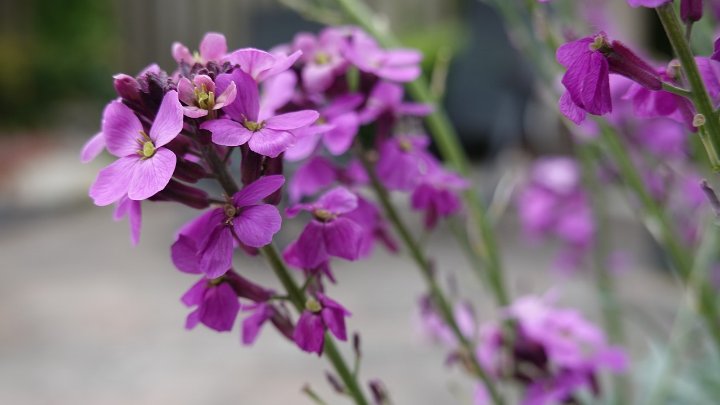
Stock flowers are celebrated for their dense clusters of vibrant blooms and delightful fragrance. Available in colors from soft pastels to bold hues, Stocks thrive in full sun and enjoy well-drained soil. Their charming blooms can make any garden feel special and fresh.
For best results, Stocks require regular watering, ensuring that their blooms remain vivid. Incorporating them into your garden will guarantee a long-lasting display, as these flowers can thrive from spring until early autumn with proper care.
Stock flowers work wonderfully in cut flower arrangements due to their captivating fragrance and durability. Utilizing them as border plants or in mixed beds can result in picturesque garden moments filled with visual interest and fragrant delight that captivates all senses.
Sunflower

Sunflowers are the iconic blossoms of summer, exuding warmth with their bright, happy faces. These beloved annuals are sensitive to light, following the sun throughout the day and adding a dynamic element to garden designs. Sunflowers thrive in full sun, reaching impressive heights and producing stunning blooms in shades of yellow, bronze, and red.
Growing Sunflowers is remarkably easy; they prefer well-drained soil and enjoy moderate watering. Taller varieties may need some support, especially in windier locations, while their broad leaves can offer shade to nearby plants. As a bonus, Sunflowers produce edible seeds that attract birds once matured, enhancing wildlife participation in your garden.
Incorporating Sunflowers into your landscape creates a cheerful, welcoming environment that appeals to both people and pollinators. Use them in arrangements to convey joy and liveliness, as they bring a sense of warmth and positivity to any outdoor space, creating an enchanting experience.
Verbena
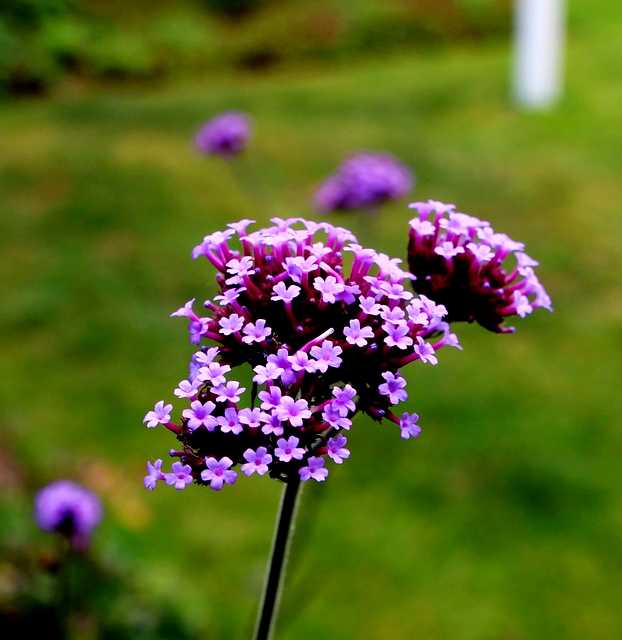
Verbena is a hardy annual known for its small, vibrant blooms that create a lovely display throughout summer into fall. Glorious in colors such as pink, lavender, and white, Verbena thrives in full sun and is renowned for its ability to bloom continuously with proper care.
These plants prefer well-drained soil and will benefit from regular watering, particularly during dry spells. Their suitability for hanging baskets, garden beds, and mixed arrangements offers versatility in design, making them an excellent choice for a variety of garden styles.
Verbena attracts a diverse range of pollinators, enhancing your garden’s ecological health. Planting them alongside other full sun annuals creates layered color and texture, ensuring your outdoor space remains vibrant and lively all summer long. Their long-lasting blooms and easy care make them beloved additions to sunny gardens everywhere.
Vinca
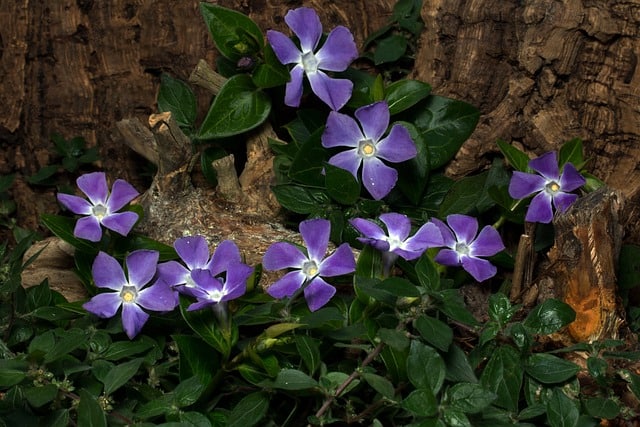
Vinca, or periwinkle, is an adaptable and sturdy annual well-loved for its glossy leaves and colorful, five-petal blooms. Thriving in full sun, Vinca brings consistent color and interest to gardens or containers, available in shades of purple, pink, and white.
These flowers prefer well-drained soil and exhibit admirable drought tolerance once established, minimizing the gardener’s watering efforts. Regular watering during dry spells will encourage lush growth and blooms, ensuring Vinca remains vibrant throughout the summer.
Due to its low-maintenance nature, Vinca is excellent for creating colorful ground covers, filling in gaps in perennial beds, or enhancing container arrangements. Their ability to bloom continuously throughout the summer and resist pests makes them a fantastic choice for those looking to create effortless beauty in their sunny gardens.
Zinnia
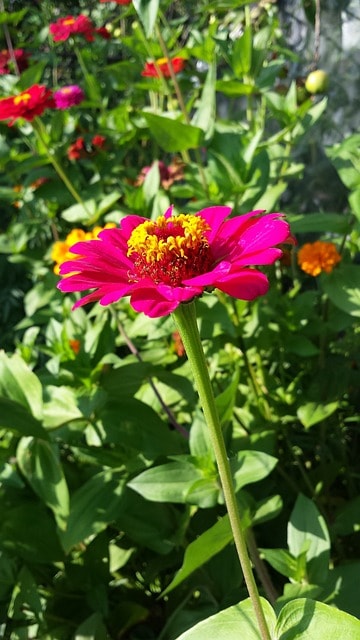
Zinnias are beloved annuals known for their dazzling array of colors and bushy growth habit. With their strong stems and long-lasting blooms, Zinnias thrive in full sun and well-drained soil, making them virtually foolproof for gardeners of all levels.
Regular watering and deadheading will keep Zinnias blooming from spring until the first frost, providing a continuous burst of color throughout the summer. They also attract pollinators, making them a valuable addition to any garden ecosystem.
Zinnias shine as cutting flowers, allowing gardeners to bring their colorful blooms indoors for bouquets or arrangements. By mixing different varieties and colors, you can create visually stunning flower beds that provide charm and joy throughout the warm months. Their cheerful presence adds to the joy of gardens everywhere, representing spirited confidence in summer gardening.



